Forgotten, neglected, and caricatured, women long held secondary roles in the highly masculine world of comics. But those days are over, thanks to figures like Wonder Woman and Mary Jane Watson, Laureline and Marji, Lucy Heartfilia and Lady Snowblood. Whether adventurers or lady loves, femmes fatales or free spirits, these bold heroines now count among the most striking and significant characters of the ninth art. Here are their stories.
SUSAN STORM
Stan Lee (writer) and Jack Kirby (artist), The Fantastic Four (1961), Marvel Comics
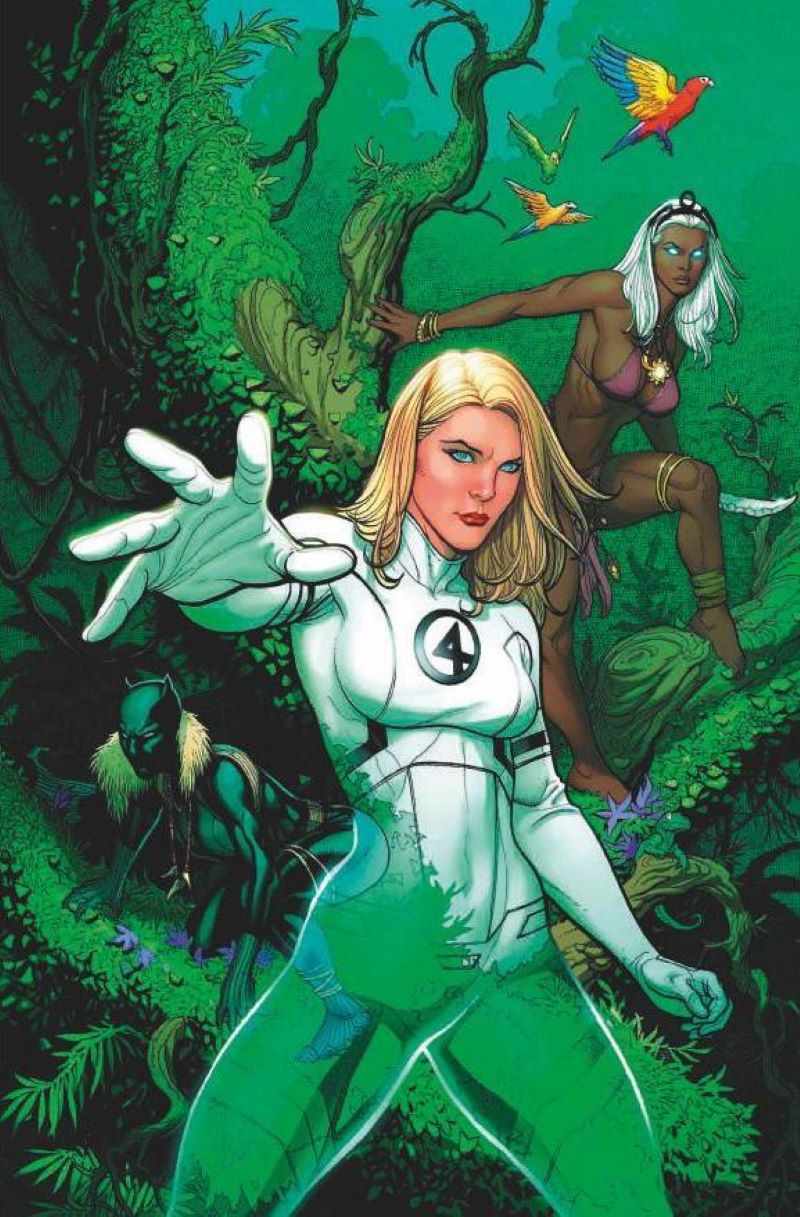
A female paradox
Susan Storm is a bit of a mystery. While her peers flaunt their charms and skills, this elegant, stunning blonde prefers to stay out of sight. What might be taken as excessive shyness or the height of discretion is simply the result of having an extraordinary power she didn’t choose and tries to make the best of Susan “Sue” Storm is no ordinary woman: she’s one of the Fantastic Four, a group of “mutates” who decide to use their powers for the forces of good. For those unfamiliar with the Fantastic Four, let’s do a quick recap…
The invisible woman
During a test flight, the spaceship commanded by the prominent scientist Reed Richards is bombarded with cosmic radiation. Once they return to earth, the crew members are horrified to discover that the radiation has triggered mutations in their bodies. Richard’s fiancée, Susan, has become invisible. Her brother Johnny bursts into flames without any warning, confirming his reputation as a hothead. As for Reed Richards, his body becomes elastic, able to stretch and twist every which way. Thus the Fantastic Four are born. From that point on, they will only be called by their new names: Mr. Fantastic, the Thing, the Human Torch and the Invisible Woman (formerly, the Invisible Girl). The world can now sleep soundly, and super-villains better watch out.
The Marvel revolution
When they created the Fantastic Four in the early sixties, scriptwriter Stan Lee and artist Jack Kirby were far from imagining that they were laying the groundwork of the Marvel universe and breathing new life into superhero stories. After falling out of fashion in the previous decade, the stories would soon meet unexpected success. Tired of writing the same old monster stories, Stan Lee was on the verge of leaving Timely Comics (renamed The Marvel Comics Group in 1963), until his boss Martin Goodman made him an offer he couldn’t resist. Goodman had heard of the success of the Justice League of America superhero team, created by their competitor DC Comics, and wanted a team of his own. This was a golden opportunity for Lee: telling stories connected with real life, with more human characters that could attract adult readers. The Marvel revolution was in full swing.
To be or not to be (visible)
As more episodes were written, Susan Storm took on new powers. She could now make objects invisible or use a force field as a shield and a weapon against her enemies. Originally created prior to the emergence of feminist movements that claimed more visibility for women in society, perhaps her creators thought her main power of invisibility was no longer in phase with the times. Either way, for Susan and the Fantastic Four, life would never again be the same. United against a common goal, with a touch of family feud every now and then, they would now fight the worst villains in the universe.
Susan in real life
Even for a superhero there’s more to life than work, and so, we get a look into domestic troubles as well. Reed and Susan get married and have two children: a girl named Valeria and a boy named Franklin Benjamin. The latter is born seven years into the couple’s adventures and has mental powers. Susan and Reed’s relationship goes through some rough patches as well, like any other couple. And as rare as it may seem for a comic book, the couple also grieves a stillborn baby and even breaks up for a time before getting back together. And then there are Susan’s buried feelings for Namor the Sub-Mariner, whose picture Johnny finds behind a book in the library. Clearly embarrassed, the Invisible Woman makes a clumsy attempt at explaining herself: “How can I explain something that even I can’t understand!” she admits, eyes downcast, to Reed Richards. “I know that Namor’s against us… but there’s something about him, something gentle and… Oh!” Ahem, better if we change the subject now dear Susan…
MARY JANE WATSON
Stan Lee (writer) and John Romita Jr. (artist), Spider-Man (1966), Marvel Comics
Could you trust a girl who dated the extremely annoying Flash Thompson? Well, yes, but only if her name is Mary Jane Watson. This is how she won Peter Parker’s heart, replacing Gwen and later becoming his wife. But she will soon learn that life isn’t easy when your husband can, at any given time, drop everything to go swinging from one building to another in a spider suit…
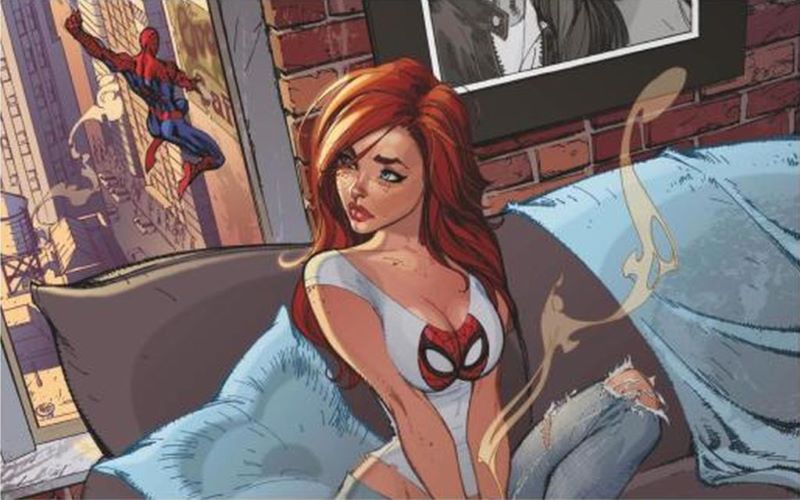
Peter Parker and the ladies
When it comes to women, Peter Parker’s worst enemy isn’t Doctor Octopus or the Green Goblin, it is and always has been himself. Raised by an overprotective aunt, Peter was a bookworm who took himself far too seriously, walking around deep in thought about math. The girls in his class saw him as a geek, a library rat, a nobody, a killjoy who deserved the brush-off. When he asked them out, he got replies like: “Peter… how many times do I have to tell you? You’re not my type!” or “Go hang out with your petri dishes!” To be fair, he should have known better than to ask girls out to the Science Museum. Peter had nothing on smooth talkers and jocks like that loudmouth brute, Flash Thompson. And if you thought that transforming into Spider-Man was going to change things, think again. Perhaps he considered crushing the obnoxious Flash many times (much like his readers), but he never actually risked using his superhuman strength, for fear of revealing his true identity. Readers who identified with poor Peter Parker took comfort in the fact that the love life of a superhero was perhaps no better than their own.
Betty and Gwen
Things do eventually start looking up for Peter (they’d be hard pressed to get any worse). After becoming a freelance photographer for The Daily Bugle, he starts seeing Betty Brant, secretary to his quick-tempered boss, J. Jonah Jameson. Betty likes Peter for the very reason women had rejected him in the past: being normal. At least she doesn’t blame him for hiding under the table while the brave Spider-Man fights the Vulture. “I’m not much of a hero,” he confesses to Betty. “Me neither!” she replies. “What I like about you, Peter… is that you don’t try to be something you’re not.” But the love story comes to an end when Betty sees the injuries on Peter’s body—supposedly from his official job as a photographer, but actually from a fight against villains—at which point she chooses to leave him rather than live with the constant worry. It’s a tough breakup for Peter, although he finds comfort in Gwen Stacy, someone he initially found to be “charming but a complete idiot.” She had been attracted to Peter for a while, even though—unaware of his true identity—she is often put off by his apparent cowardice. Alas! Her tragic death at the hands of the Green Goblin plunges Peter back into solitude. The road is now clear for the love of his life. Her name is Mary Jane Watson.
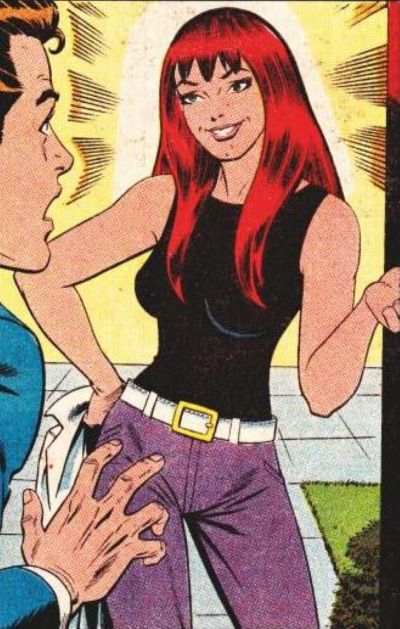
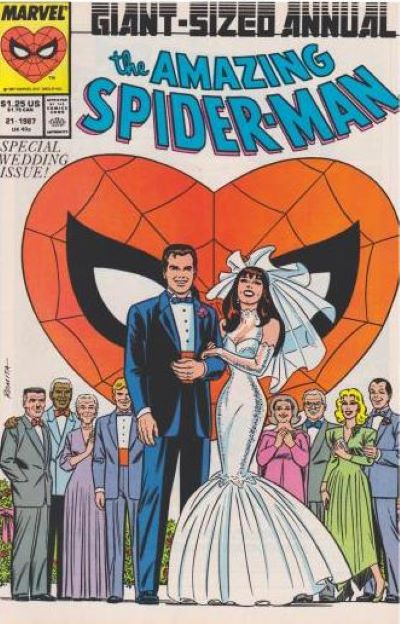
“Face it, tiger… You just hit the jackpot!”
This is how the seductress with a movie star figure, Mary Jane, introduces herself to Peter at a dinner set up by their respective aunts. This dinner has been in the making for a while, but Peter—obsessed with Gwen Stacy—had taken no interest. It’s only after Gwen’s death that Peter starts paying Mary Jane the attention she deserves. Once they find out how much they have in common, especially from their younger days, they start dating and even go on to get married, despite Mary Jane turning down Peter’s first proposal. An event that was noted in the universe of superhero comics due to its rarity, this marriage was nevertheless very much in keeping with the spirit of Spider-Man, a character created by Stan Lee as a reflection of the everyday lives of the adolescent readership, staying in step with the hero from high school to adult life.
The next part of the story unveils twists and turns in classic Marvel style. Jane will end up telling Peter she has long known his real identity, and what a burden it has been to carry his secret, a revelation that will go as far as causing a temporary breakup. Model, dancer, soap opera star (ironic, considering that Spider-Man is at times like a soap opera), Mary Jane will not get the acting career she so longed for… But as luck would have it, she will later get a leading role, notably brought to life on the silver screen by Kirsten Dunst in the brilliant Spider-Man adaptation by Sam Raimi.
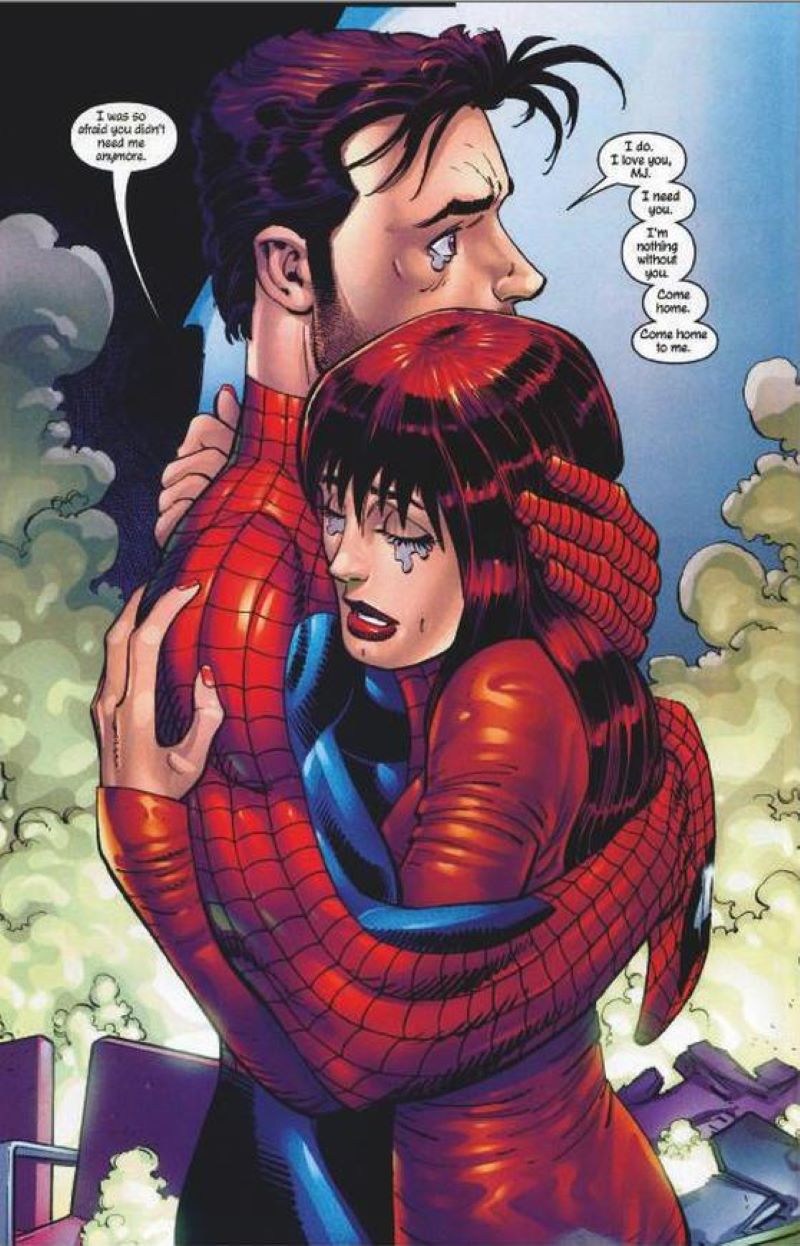
HARLEY QUINN
Paul Dini (writer) and Bruce Timm (artist), Batman, DC Comics
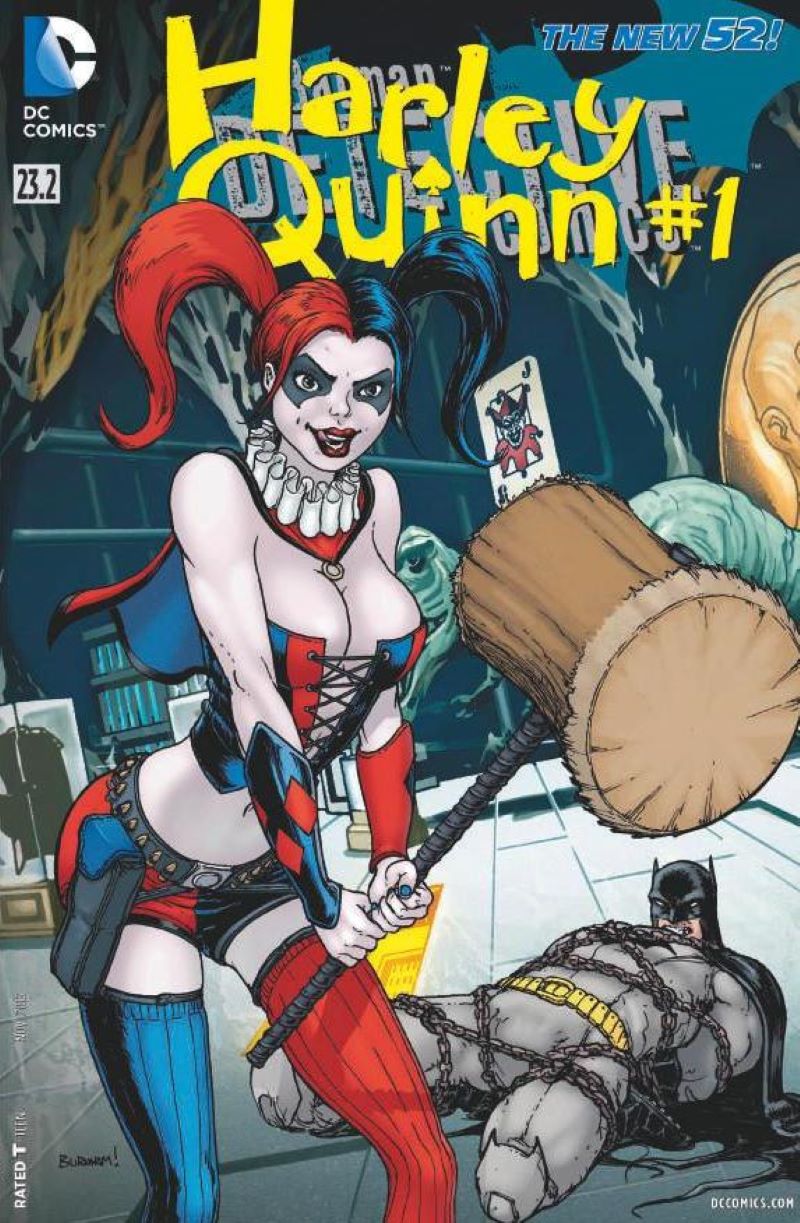
The Joker’s girlfriend
This woman is insane. She’s attractive, funny, alluring, you name it! But she’s definitely off the rails. How else could she fall in love with The Joker, one of the most dangerous villains in the comics universe, a manipulative deviant gifted with a sense of humor that he sadistically displays with a disfigured smile? Nobody saw it coming: Harleen Quinzel (her actual name) started out as a psychiatrist, someone you would generally trust. But it seems working on the borders of insanity can push you off the edge after all… Hired to work at Arkham Asylum, she somehow managed to fall for the Joker. She went as far as to put on a Harlequin costume (hence her name) to help him break out, and went on to join his gang, becoming a merciless criminal herself. They say women sometimes go all out for love, but darling Harleen has gone overboard.
I love you, I hate you
Harley Quinn is an unusual comic book figure. Created by Bruce Timm and Paul Dini, she started her “career” in an animated series based on the Batman universe. She became one of the first characters to go from the TV screen to print comics, her tone getting much darker in the process, as she continued to face off against Gotham City’s masked vigilante (okay, Batman’s a bit unstable as well, but that’s another story). The love-hate relationship between Harley Quinn and the Joker is not your average soap opera fare: it swings between lust and violence, from burning passion to spectacular breakups. A real shrink would quickly recognize Harley’s masochistic tendencies: the more she is mentally and physically mistreated, the more she loves the Joker, and the more she loves him the more unpleasant he becomes. And since we’re talking about the Joker, we don’t just mean run-of-the-mill unpleasantness. She loves him not, she loves him still… you get the picture. Harley Quinn is a woman in love and she’ll use it as an excuse to get away with a lot. After all, isn’t love itself a type of madness?
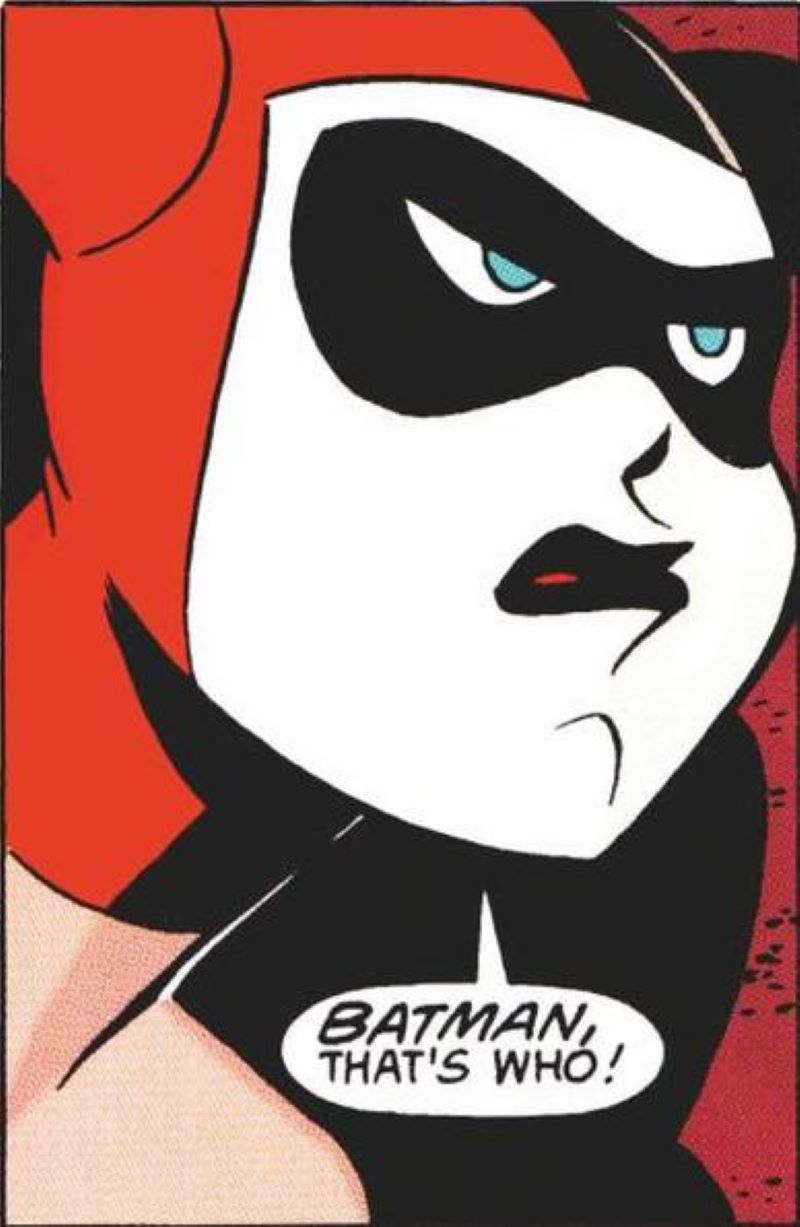
MINNIE
Walt Disney (writer), Ub Iwerks (animation and artwork), Floyd Gottfredson (artist) & various authors, Mickey Mouse (1928), Dell Comics
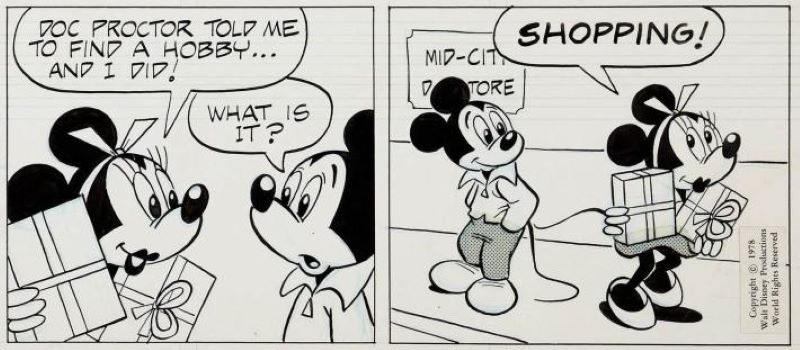
Gung-Ho
We can only admire a woman who uses her bloomers to parachute jump out of a plane. In a movie theater on Sunset Boulevard in May 1928, two little mice called Mickey and Minnie made their debut in a short animated film called Plane Crazy, inspired by Charles Lindbergh’s transatlantic flight the year before. Walt Disney created the characters, but it was Ub Iwerks who drew them. The plot was simple enough: Mickey takes Minnie out on the plane he fashioned from car parts, in an effort to steal a kiss from her. She decides she’s having none of it and leaps out of the plane. Minnie’s one tough cookie. Soon after, the pair also starred in two other animated features: The Gallopin’ Gaucho and Steamboat Willie.
Minnie or Ms. Mickey?
Minnie and Mickey were a big screen hit and by January 1930 they started appearing in comic strips in daily newspapers. The storyline from Plane Crazy was captured in print: this time, when Minnie jumps out of the plane, it’s to escape a crash. From then on, Minnie becomes Mickey’s loyal companion. Their relationship, which the comics initially portrayed as occasionally rocky, gives way to a more peaceful coexistence, although Minnie never becomes a pushover. That said, Mickey’s carefree and happy-go-lucky demeanor strikes a balance with Minnie’s sometimes overly serious attitude. After creating the first comic strip adaptations, Ub Iwerks passed the torch to Floyd Gottfredson, who would be responsible for several thousand strips and color pages in the Sunday papers, solidifying Mickey and Minnie’s definitive look in readers’ minds. Later, in a 1942 comic strip, we’d learn that Minnie’s original name was “Minerva Mouse.” A question remained, though: what were the readers to make of their relationship? While they didn’t live under the same roof, surely they were more than friends. Walt Disney himself put the speculation to rest in a 1933 interview with Film Pictorial: “In private, Mickey is married to Minnie.” Sometimes engaged, sometimes married, their status would vary according to the needs of the storyline. Phew… respectable after all!
BATGIRL
Garner Fox (writer) and Carmine Infantino (artist), Batman (1967), DC Comics
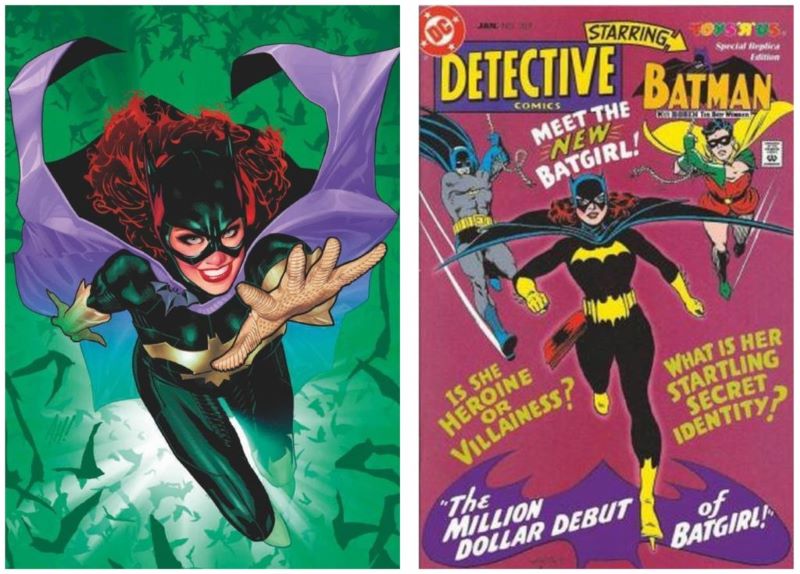
“Heroine or villainess?”
If it weren’t for American psychiatrist Fredric Wertham and his crusade against comics, Batgirl wouldn’t exist. In his book Seduction of the Innocent, published in 1954, he accused comic books of corrupting the nation’s youth. He even went as far as to cast aspersions on Batman and Robin’s sexuality, prompting the creators to come up with female versions of the superheroes. Betty Kane, known as Bat-Girl, was created in 1961, five years after the introduction of Batman’s cousin Kathy Kane, also known as Batwoman. Bat-Girl falls in love with Robin, and seems more like Batman’s alter ego than his female counterpart. Both characters were ultimately axed in 1964 by editor Julius Schwartz due to their weak popularity. In 1967, Batgirl—now without the hyphen, like Supergirl—was introduced as a new incarnation of the character. Her name is Barbara and she’s the adopted child of Batman’s friend, Commissioner Gordon. Conceived specifically for the TV adaptation of Batman, Batgirl was a character that the producer felt was needed to tone down the show’s overly macho atmosphere. It was the great Carmine Infantino who drew Batgirl in a superb black costume decorated with a yellow bat sign. This was her look when she was introduced on the cover of issue 359 of Detective Comics, with the caption, “Is she heroine or villainess?”
Batgirl(s)
Batgirl is a heroine; there’s no doubt about it. She’s the real deal: an independent woman who works at Gotham City’s library by day, and becomes a full-fledged vigilante by night, fighting crime in her superhero costume – mostly without Batman and Robin’s help. She’ll even become the most popular character of the saga, until the tragic day in 1998 when a bullet from the Joker leaves her paraplegic in Alan Moore’s graphic novel The Killing Joke. Barbara Gordon’s forced retirement doesn’t mean the end of Batgirl; the fight against evil will be taken up by others: first Helena Bertinelli, then Cassandra Cain and later Stephanie Brown. Barbara will eventually make a comeback as Oracle, providing intelligence services to other superheroes, later recovering the use of her legs. Comic book historian Peter Sanderson wrote that Barbara Gordon’s Batgirl was a symbol of the emergence of feminism in the sixties. For those who can’t get enough of the comic book version of Batgirl, the character—played by Yvonne Craig—is well worth a view in the televised version of Batman that aired in the US between 1966 and 1968.
WONDER WOMAN
Charles Moulton (writer) and Harry G. Peter (artist), Wonder Woman, DC Comics
Wonder Woman is no ordinary woman, but she’s no regular superhero either: while the MO of her male “colleagues” is to crush opponents, she believes in second chances, peace on earth and the principles of feminism. She was, after all, created by a psychologist and staunch feminist, who also happened to be the inventor of the lie detector. Not a lot of superheroes can boast such parentage!
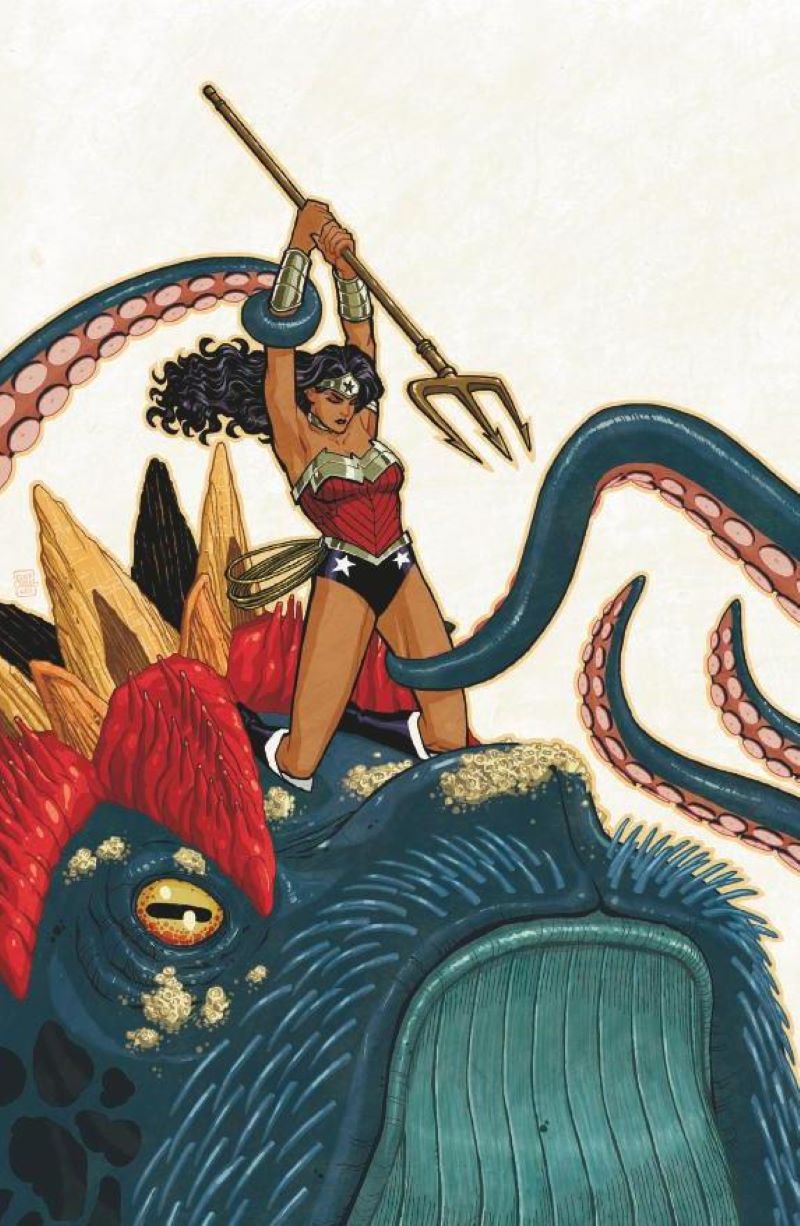
A feminist superheroine
Wonder Woman was meant to change the world, just not in the same way as other superheroes, that is to say, by bringing bad guys to justice. Of course, she participated in the war effort, much like Superman, and bravely fought the Nazis in a star-spangled suit that made her allegiances clear. But what made her so original, other than being a woman in a male-dominated world, was the mission her creator, Charles Moulton, had given her: to educate young readers on women’s role in modern society and the benefits of a more feminine world. Psychologist, lawyer and novelist William Moulton Marston—his real name—was an avid fan of comic books at a time when these were still scorned by intellectuals. After telling the editors at DC Comics that their storylines were in dire need of female characters, the publisher took him on, and he went on to create Princess Diana, a.k.a. Wonder Woman, who wasn’t quite the first female superhero to be featured in comics (as is sometimes reported), but was in fact the first feminist superheroine.
…And supersecretary
Wonder Woman was also the first superhero, as early as 1942, to get her own dedicated comic book. She is in fact the only DC Comics character—apart from legends Superman and Batman—to have enjoyed uninterrupted publication since creation. In 1943, she joined the ranks of the Justice Society of America, an association of superheroes created during WWII whose adventures were published in All-Star Comics magazine. Unfortunately, Moulton’s progressive ideas ultimately failed to prevent JSA members from confining her to a desk as a secretary.
The whip of redemption
Hailing from Paradise Island, a place solely populated by women, Wonder Woman comes from a long line of legendary Amazons. She upholds peace and equality between nations, in line with her creator’s progressive values. We see Moulton’s influence as the inventor of the lie detector too: Wonder Woman’s magic whip can force the truth out of anyone. That said, the whip didn’t sit well with the censors, who were none too happy with the collection of tied-up characters, scenes that were perhaps a little too reminiscent of the practice of bondage. Like any self-respecting superhero, Wonder Woman has several powers and special equipment, including a pair of bulletproof bracelets, but she stands out among her peers for her willingness to give second chances to the villains she defeats and her belief that they can be redeemed.
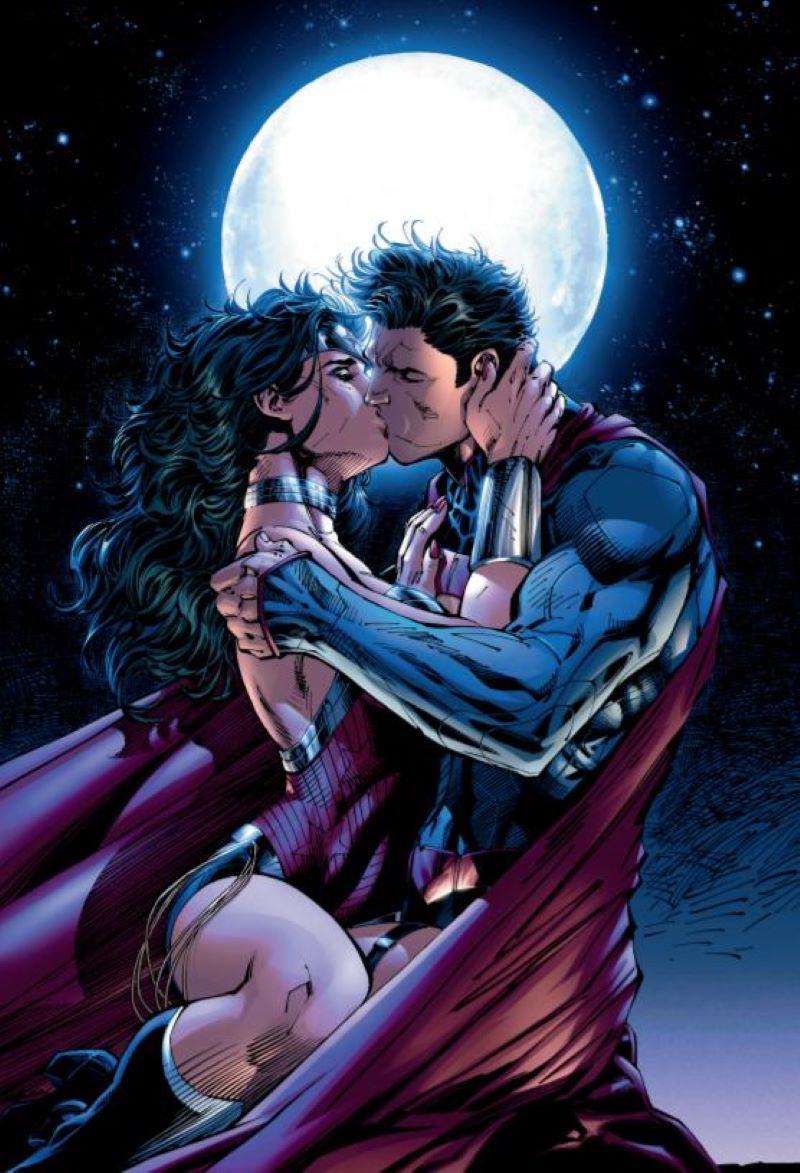
The decline
Although Wonder Woman continued to be published after Moulton’s death in 1947, she lost some of her grandeur and uniqueness. In 1954, editors across America adopted the Comics Code Authority, a self-censorship measure in response to psychiatrist Fredric Wertham’s vicious attacks on comic books. The new code watered down the feminist characteristics that set Wonder Woman apart in the DC Comics universe. This somewhat diminished her standing as a superhero, casting her in a role closer to that of secret agent Emma Peel, star of the British television show The Avengers. In direct opposition to the late Moulton’s ideals, the new Wonder Woman became versed in martial arts, handled weapons and even killed her enemies. This version was a great success, particularly through the 1967 TV adaptation where Lynda Carter played Wonder Woman in a way that left a mark on an entire generation of men.
The comeback!
The 1980s brought changes to the superhero universe. DC Comics modernized their characters across the board between 1985 and 1986, with a new series called Crisis on Infinite Earths that also resurrected Wonder Woman. In 1987, she began to appear in George Perez’s stories. In his book on superheroes, author Martin Winckler praised Perez’s work as “one of the most inspired comic books of the 20th century.” The revamped Wonder Woman became the ambassador of the Amazon nation, spreading her peaceful and feminist values around the world. Since then, she continues to inspire Perez’s successors and has stayed true to Charles Moulton’s original idea of the character.
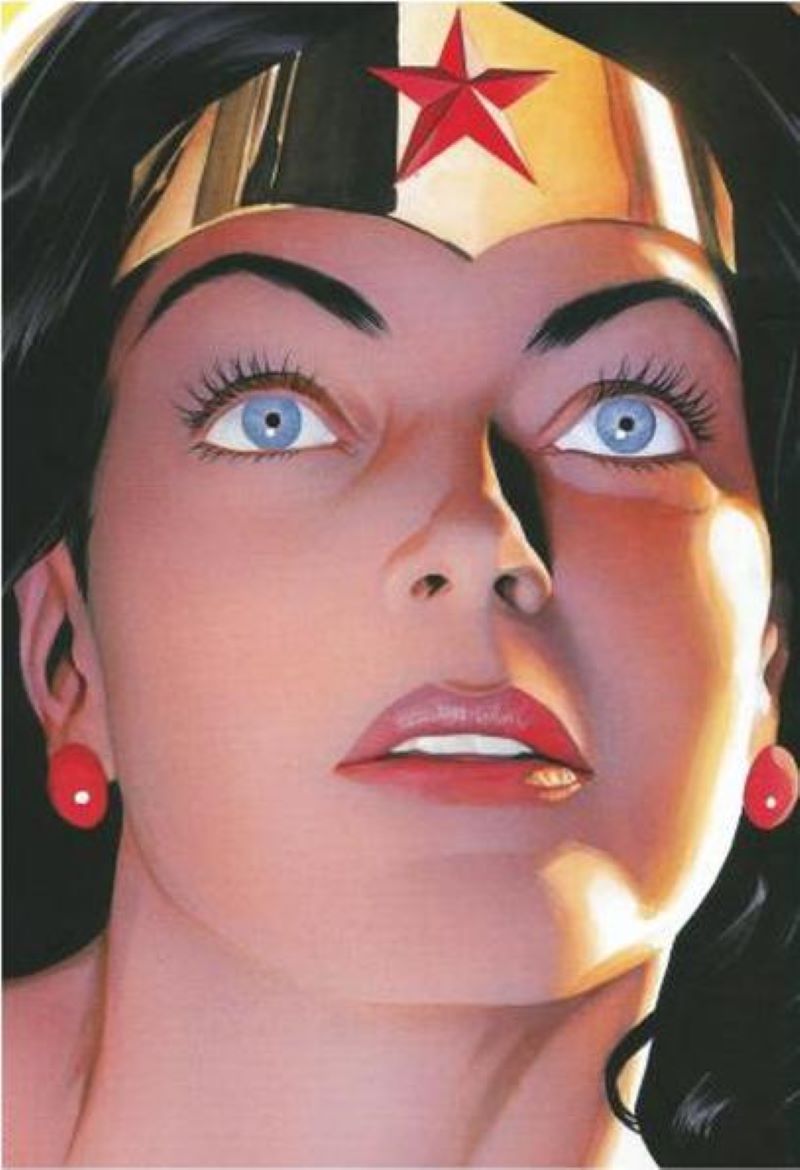
CATWOMAN
Bill Finger (writer) and Bob Kane (artist), Batman (1940), DC Comics
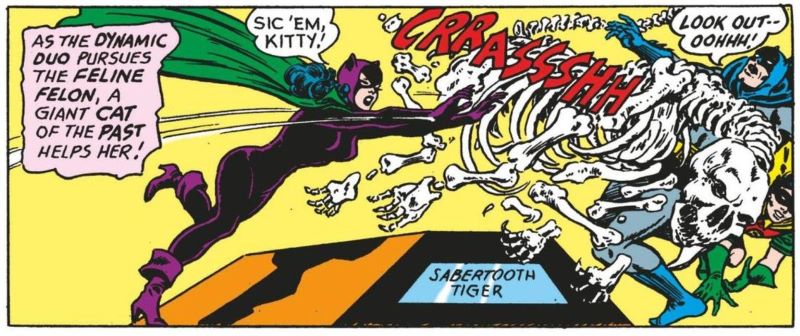
The cat woman and the bat man
It’s easy to mix up Catwoman and Batwoman. After all, their names are only a letter apart. Batwoman is the cousin of Bruce Wayne (for those who never crossed paths with him, that’s Batman’s real name) and heir to his fortune. She fights crime by his side, but rarely gets the credit for it; there’s a little too much testosterone in Batman for that to happen. Unlike Batwoman, who is staunchly on the side of law and order, Catwoman plays a more ambiguous role from the very beginning. Her love-hate relationship with Batman features a paradoxical mix of mutual attraction and epic clashes. Despite featuring in storylines more often than not as the villain, she’s too respectful of human life to really hurt anyone. On occasion, we even see her at Batman’s side against the bad guys.
Bad girls vs Batman
Selina Kyla, a.k.a. Catwoman, had a rough childhood. Much like other comic book super-villains, she spent her younger days on the wrong side of the law. Such an oft-seen path to a life of crime may reveal the writers’ subconscious Marxist tendencies—or perhaps it’s simply a convenient scenario. Scriptwriters over the years have given her many different jobs and identities but never changed her main attribute: Catwoman is an irresistible, world-class burglar with deadly martial arts skills. How can we forget Michelle Pfeiffer’s Catwoman in Tim Burton’s Batman Returns, with her slinky, black latex suit that was as chic as it was kinky? In the comic books, she starts off with a simple cat-shaped mask to cover her face; then, in 1947, she dons a slit purple dress and a green cape. Tiptoeing between good and evil and never missing a chance to live up to her “bad girl” reputation, Catwoman nonetheless consistently manages to stir empathy in readers. So no one blames a badass like Batman for succumbing to Catwoman’s feline charms, even if her sharp claws threaten to tear into his soft heart time and again.
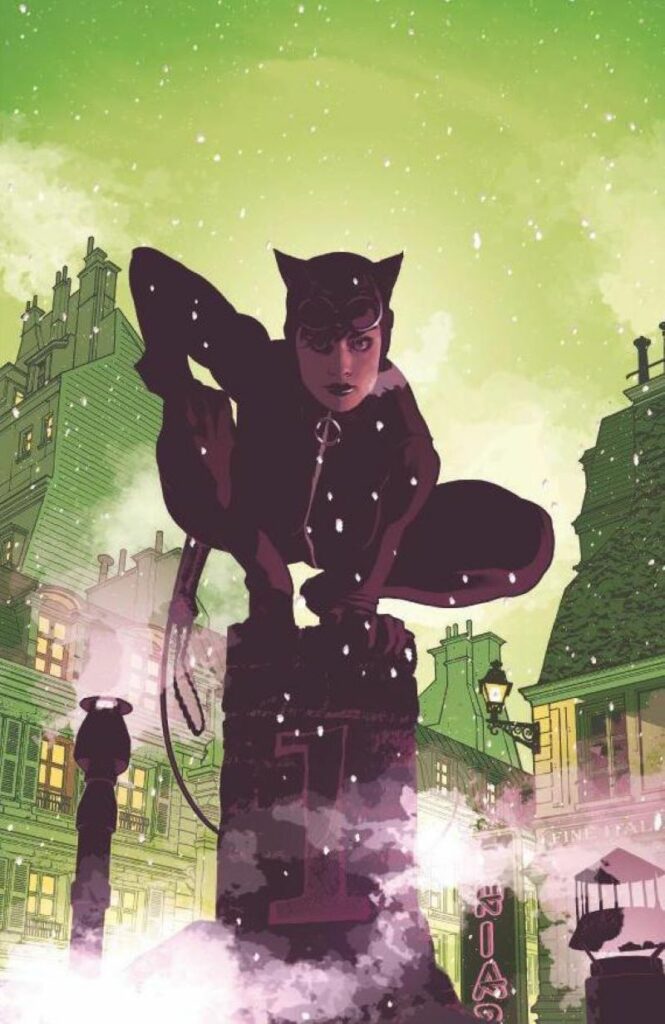
LUCY VON PELT
Charles Monroe Schulz (writer and artist), Peanuts (1952), McMeel Syndication
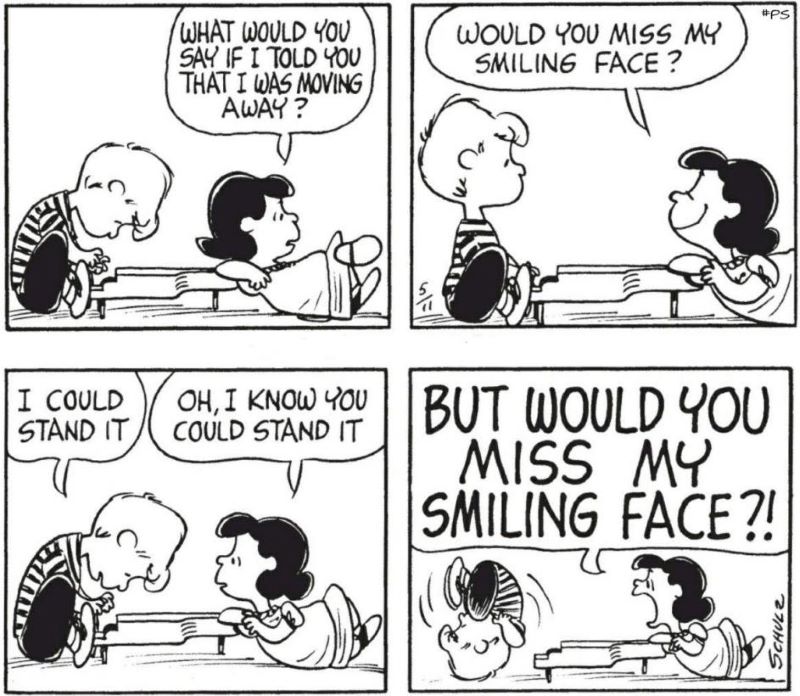
Ill-tempered, but so what?
Lucy plays the black sheep of the Peanuts family. She’s got all the self-assurance in the world; annoying and ill-tempered, she’s always ready to cut down poor Charlie Brown with sarcastic advice, her “therapy sessions” delivered in a makeshift booth at a cost of five whole cents a visit. “Looks like it’s going to be a nice day,” she says while staring out the window at the pouring rain. “You call this a nice day? It’s rainy and windy and cold!” says her brother Linus, surprised. “That’s the whole point! It’s a perfect day for whining!” On top of all this, she’s very touchy when it comes to people’s opinions of her. She asks Charlie Brown, “Why should I ever doubt myself?” and he replies, “Because you’re not perfect either!” She’s absolutely speechless at that. This is endlessly amusing to Charlie Brown, who figures he’s never seen anyone so astounded. No, Lucy’s not perfect, thank God, but she’s unlikely to ever realize it.
Soft inside
Lucy’s Achilles heel is her heart, and it beats for Schroeder. He’s a fan of Beethoven and is obsessed with a toy piano that he spends most of his time playing, pointedly avoiding Lucy’s emphatic declarations of love. When she asks him why he won’t marry her, Schroeder is pretty clear about his reasons: “I don’t love you! Plus, you do nothing but boss me around!” It’s not enough to convince her, of course. For the newbies, it’s never too late to discover all seventeen thousand comic strips in this legendary saga, where a group of loveable—and according to some critics, neurotic—kids spend most of their time discussing existential issues. Don’t be fooled by the overwhelming amount of Snoopy merchandise or the animated series inspired by Charles Schulz’s stories: Peanuts was meant for adults as much as for kids. The title, which Schultz disliked, is not only a cute reference to the pint-sized characters, it’s also meant to signal that it talks about things of little importance, which was definitely not the case for this hit series. Peanuts was in fact America’s first “intellectual” comic strip and has remained a major reference point years after the passing of its creator in February 2000.
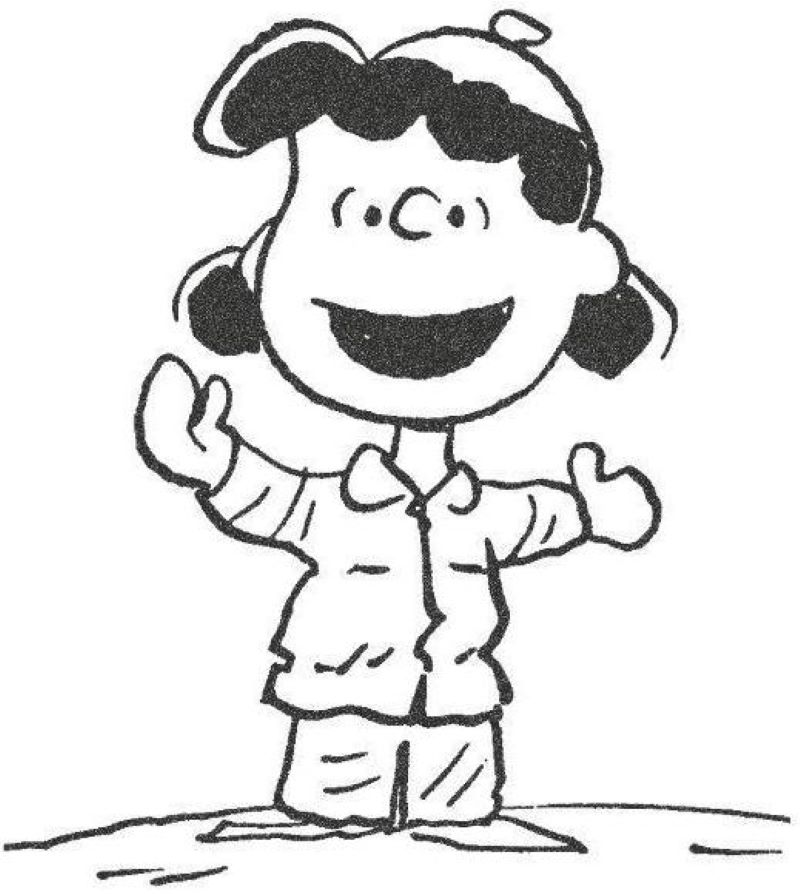
OLIVE OYL
Elzie Crisler Segar (writer and artist), Popeye, King features Syndicate
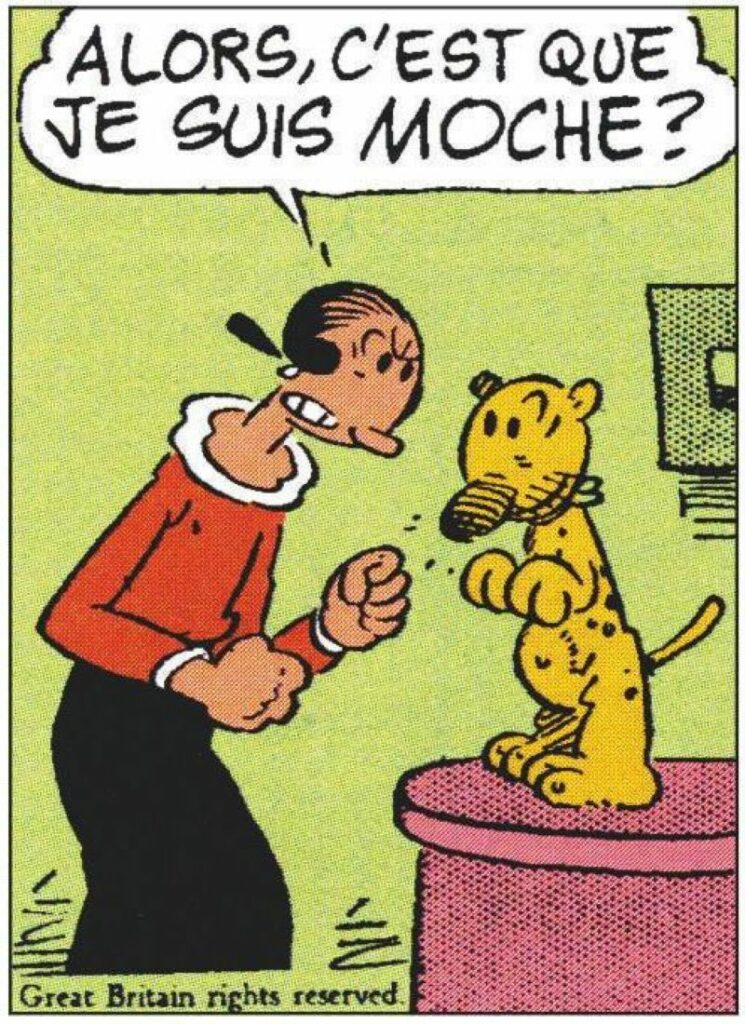
Olive was inspired by a woman who ran a grocery in Chester, Segar’s hometown in Illinois. She’s quick-tempered and scrappy, uncompromising but a bit of a softie, the jealous type, who occasionally fools around. In the end, she always comes back to Popeye. This likeable character was brought to the silver screen by Robert Altman, with Shelley Duval putting on a perfect Olive, down to the smallest detail.
The sailor’s girlfriend
Olive Oyl and Popeye seem destined to be together, despite the constant squabbling and cheating. When she meets the one-eyed sailor, she’s already engaged to a man called Ham Gravy. Gravy is, like Olive, a character in the Thimble Theater. E. C. Segar debuted this light-hearted comic strip in 1919 in the New York Evening Journal, as a sort of paper theater that parodied the more successful melodramas of the era. Ten years later, Segar introduced a new character to his print stage: a foul-mouthed, pipe-smoking sailor named Popeye. Popeye’s arrival gave the Thimble Theater a second wind, and he quickly gained center stage. Despite his ungainly physique, his lantern-jawed face and excessively large forearms and legs, Olive is smitten, and soon they become engaged to be married, and stay that way, never actually sharing a roof.
“Oh dear!”
Olive Oyl’s name was a nod to Segar’s grandfather, who distributed olive oil for a living. Her stick-thin figure and unusually large feet are often mocked by Popeye. Her somber clothing didn’t do her any favors either. Some insensitive critics declared her as the epitome of ugliness. She’s also a brawler, just like Popeye, which doesn’t help, nor does the strange way Segar has her twisting her limbs. There’s the odd way she speaks, too, a unique trait she shares with her favorite sailor, making her sound a bit on the rough side.
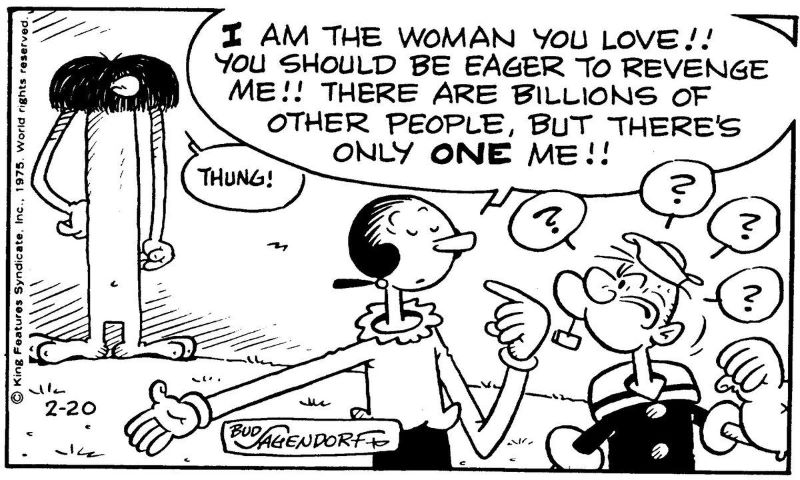
CRUMB’S WOMEN
Robert Crumb (writer and artist), My Troubles with Women (1980), Last Gasp
Obsession
Robert Crumb is a sex addict, and he’s crazy about women with big bottoms and large calves.
“All I do is think about sex and collecting old vinyls,” he confides in Uncle Bob’s Mid-Life Crisis. One of his books is aptly titled, My Troubles with Women. Puberty was hell for Crumb. He was a high school misfit, more interested in the arts than in roughhousing and sports. And while he got on well with girls, sharing the same tastes and sensitivity, they chose the alpha males over him every time.
“Why do the most sensitive girls go for the most aggressive and violent guys?” young Robert wondered while drawing sketches that all the girls loved. They should have been more attracted to him, but instead preferred the hyper-confident, macho males. Life sucked. “God’s got it wrong,” Robert thought. “He can’t exist, because he wouldn’t have let all this happen to me.”
Guilt
Robert sought refuge in drawing and his vivid imagination. At night he would fantasize about Sheena the jungle queen and then would draw the pulpy creatures he dreamed of to feed his frantic fantasies. Alas, the ensuing pleasure was quickly spoiled by a feeling of guilt; in My Troubles with Women, he explains the sense of deviance he was burdened with over his activities. That said, these drawings are precisely what Robert Crumb owes his success to. They made him a star of underground comics. All of a sudden, the ladies started noticing him, and (who can blame him?) he didn’t waste a second. While some feminists accused him of being misogynistic, other women felt he empowered them through his stories. All in all, Robert Crumb ended up being quite a controversial figure…
Love
Crumb is also a man in love with his wife, artist Aline Kominsky-Crumb. They have been drawing themselves for the past forty years in Dirty Laundry Comics and Self-Loathing Comics, an autobiographical telling of their married life, which has a passion that only intensifies over the years. The latter is destined “for mature readers only,” whereas the former presents itself (somewhat cheekily, perhaps) as “a true family comic strip.” An ambiguity that speaks to the dual nature of Crumb’s work.
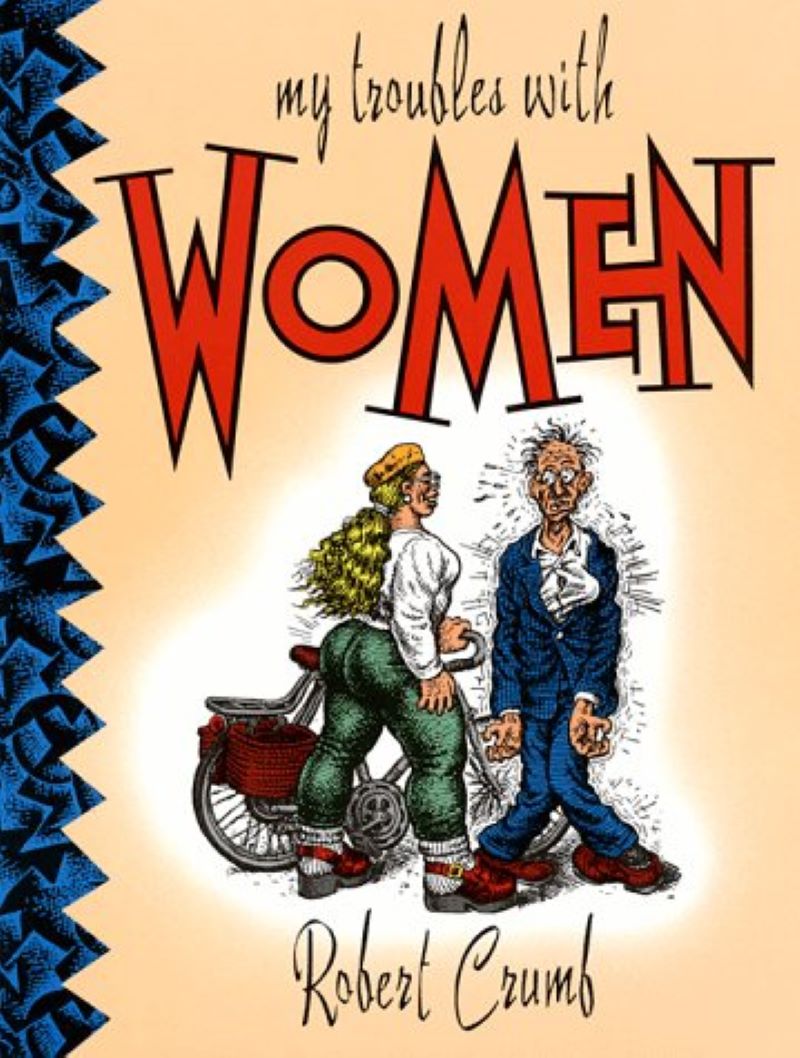
The Heroines of Comics : USA is the second of a four part article series The Heroines of Comics written by Christophe Quillien and published in France as Elles : Grandes aventurières et femmes fatales et de la bande dessinée, Huginn & Muninn, 2014. The third and fourth parts on Japan and erotica, will be release later this year.
Part 1: The Heroines of Comics : Europe
Header Image: [Catwoman] © Finger & Kane / DC Comics
Continue to Part 2

























